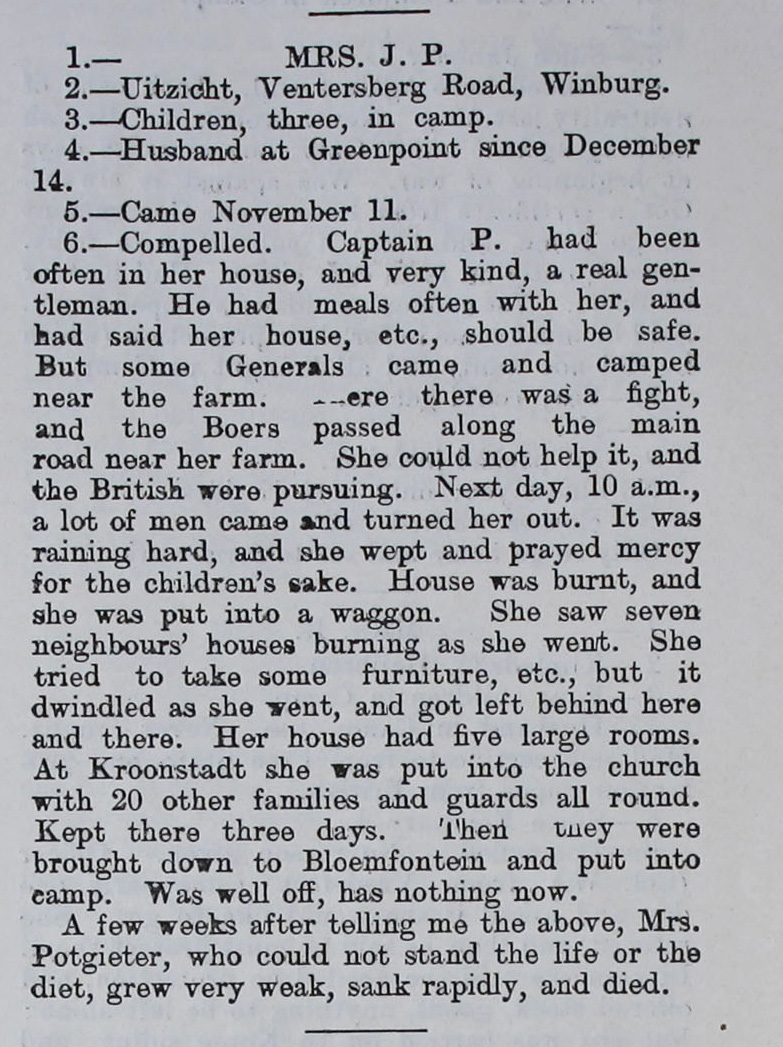
1 – MRS. J.P.
2 – Uitzicht, Ventersberg Road, Winburg.
3 – Children, three, in camp.
4 – Husband at Greenpoint since December 14.
5 – Came November 11.
6 – Compelled. Captain P. had been often in her house, and very kind, a real gentleman. He had meals often with her, and had said her house, etc., should be safe. But some Generals came and camped near the farm. Here there was a fight, and the Boers passed along the main road near her farm. She could not help it, and the British were pursuing. Next day, 10am, a lot of men came and turned her out. It was raining hard, and she wept and prayed mercy for the children’s sake. House was burnt, and she was put into a waggon. She saw seven neighbours’ houses burning as she went. She tried to take some furniture etc., but it dwindled as she went, and got left behind here and there. Her house had five large rooms. At Kroonstadt she was put into the church with 20 other families and guards all round. Kept there three days. Then they were brought down to Bloemfontein and put into camps. Was well off, has nothing now. A few weeks after telling me the above, Mrs. Potgieter, who could not stand the life or the diet, grew very weak, sank rapidly, and died.
Look at Source 8.
Extracts 8a-d from a report ‘To the Committee of the Distress for South African Women and Children’, compiled and written by Emily Hobhouse to investigate the mistreatment of those held in British camps, which includes reports and letters after visiting many of them, 1901, Catalogue ref: WO 32/8061
The latter stages of the war had descended into guerrilla warfare, and refugee camps had initially been set up to shelter civilian families. The British policy, under Lord Kitchener, of burning farms and homesteads to prevent the Boers from accessing supplies soon resulted in an influx of civilians into these ‘concentration camps’ or refugee camps. In total, forty-five camps were built for Boer internees, and an additional sixty-four were built for black Africans. It is estimated that 26,000 Boer women and children died, as well as over 14,000 black inmates, mainly as a result of disease and malnutrition.
- What do these extracts reveal about living conditions in these camps?
Read again those extracts which relate to individuals/families in camps. Explain the following:
- Why were they brought to the camp?
- What had they done?
- Were other members of their family directly involved in the war in some way?
- What was the state of their health whilst in the camp?
- How does this system of ‘concentration camps’ represent a war against civilians?
- What can be inferred about the impact of the war against the civilians of South Africa in terms of (a) its economy (b) its population (c) Boer fighters?
